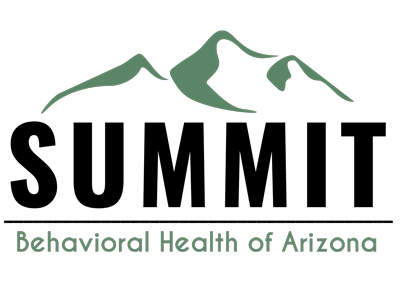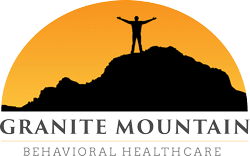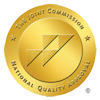
Every person has experienced “bad days” or feeling down. Either it’s our home life, our relationship, something at work, or sometimes we “wake up on the wrong side of the bed,” no one is exempt from having a bad day. Some people can do something that makes them happy or makes them feel good and change their mood.
However, for some who suffer from depression, it is not so easy to find a reason to be happy. It is the search to be happy that leads 50% of people who suffer from depression, to also suffer from addiction, and vice versa. When an individual is diagnosed with depression and addiction, it is called a Dual Diagnosis.
What Is Depression?
Depression is not just being sad or having a bad day. Let’s face it; we all go through ups and downs. But, depression is an ongoing daily battle against feeling worthless and extremely sad, feeling empty and alone or feeling like the world is closing in around you with no way out. The individual who suffers from Clinical Depression is far more affected than someone with simple depression. Clinical Depression is depression that lasts two weeks or more while interfering with your daily life at home and work.
Signs of Depression
The following are some of the signs that someone is suffering from depression:
- Irritability
- Anger
- Extreme sadness
- Anxiety
- Trouble concentrating
- Increase in body aches and pains
- Loss of energy
- Change in sexual activities
- Change in appetite
- Change in sleeping habits
- Feeling helpless
- Thoughts of suicide or self-harm
- Feeling like no one loves you
Depression is a mental illness and is so much more than feeling sad. Depression is not able to see an end. Depression affects your day-to-day activities, your relationships with family and friends, and more times than not, depression leads to abusing alcohol and drugs.
Dual Diagnosis: What Is Addiction?
Addiction is explained as a complex condition, a brain disease that is manifested by compulsive substance use regardless of harmful consequences.
Addiction comes in many forms; a person can be addicted to drugs, alcohol, shopping, just to name a few. Addictions to drugs and alcohol kill thousands of people a year in the United States alone and affect millions of people, from the families of addicts to the strangers affected by the addict’s choices.
A person who starts down the road of addiction does not think, “I am going to become an addict!” A person either tries drugs or alcohol because of peer pressure or wanting an escape from their lives.
The First Stage of Addiction
The first stage is experimenting. Some people experiment because of peer pressure, while others try it to hide the pain they feel.
The Second Stage of Addiction
The second stage is of regular use or abuse. This is when you are now starting to indulge on a regular basis.
The Third Stage of Addiction
The third stage of addiction is tolerance; this happens when you no longer get the same “high” as you initially did. So, you have to increase your intake.
The Fourth Stage of Addiction
The fourth stage is dependence; this happens when you must have what you are addicted to in order to function.
The Fifth Stage of Addiction
The fifth stage is an addiction; your brain and your body can not function on a regular basis without being “high.” While you are not feeling the initial pleasurable feelings of using, you are feeling adversely much, much worse without the substance.
The fifth stage is when an addict’s life starts to go downhill very rapidly. It has a negative effect on not only the addict but their friends and family. Families are torn apart and heartbroken that they can not help the addict. Friends and family become not as important in an addict’s life because feeding their addiction is the only thing they live for.
Signs of Addiction
- Changes in daily behaviors
- Needing an unusual time alone
- New friends
- Money problems
- Lying
- Personal hygiene starts not to be important
- Irritable
- Isolation
- Stealing
- Lack of interest in hobbies
- Legal problems/criminal charges
- Staying out all hours of the night
- Change in sleeping patterns
- Change in eating patterns
It is important to watch out for these signs if you believe you are a loved one is suffering from addiction.
Dual Diagnosis: What is it, How Common Are Co-Occurring Conditions?
When a person is diagnosed with addiction and depression it is called a Dual Diagnosis (co-occurring condition). According to the National Survey on Drug Use and Health (NSDUH), 45 percent of people with addiction have a Dual Diagnosis.
Depression is sometimes referred to as a “gateway” to addiction. Even though it can lead to an addiction of any kind, it most commonly leads to an addiction to drugs and/or alcohol. Just as depression can lead to addiction, addiction can lead to depression. And 29 percent of people with depression suffer from drug and alcohol addiction. More than 50 percent of people suffering from a Dual Diagnosis do not seek treatment.
In the past six years, people in drug and alcohol treatment and also seeking help with depression has increased from 12 to 16 percent. 10 percent of people who are still functioning in the everyday workforce are struggling with depression, and another 10 percent are struggling with addiction. Of those people who are secretly struggling, approximately 3 percent are fighting both.
Unfortunately, only 40 percent of the over 3 million working Americans seek treatment.
Dual Diagnosis for Depression and Addiction: What are the Treatment Options?
As the number of people who suffer from a Dual Diagnosis increases, the different treatment options are also growing. Treatment centers like Granite Mountain have treatment options to fit everyone’s personal needs. The types of treatment options include Inpatient, Outpatient, Intensive Outpatient (IOP), Partial Hospitalization Treatment (PHP), and Therapy in treatment.
Depression and Addiction: Inpatient Treatment
For some people, inpatient treatment programs are the best way for them to be successful on their journey. Inpatient treatment gives them the security and stability of 24-hour care at a live-in center. Inpatient programs are intensive and require a lot of hard work from the patient.
Inpatient programs help the individual detox from any substances in their body and work with them to start healing themselves from the inside. Each moment of the day is scheduled and closely monitored by many individuals in the facility. Patients work with counselors, psychiatrists, and psychologists in individual settings as well as group settings. Inpatient treatment lasts anywhere from 28 days to 6 months or more.
Depression and Addiction: Outpatient Treatment
Outpatient treatment offers people the flexibility to keep working or going to school. On average Outpatient treatment requires 12 hours of treatment a week. Outpatient treatment focuses on drug abuse education, individual and group counseling, and works with addicts on how to cope with life’s obstacles without reaching for drugs or alcohol. Outpatient treatment can be a good option for someone with a mild addiction, and some recovering addicts still go to an outpatient program to continue their journey to a life of sobriety. Outpatient treatment can last three to six months, and for some, it lasts up to a year.
Depression and Addiction: Intensive Outpatient Treatment (IOP)
Intensive Outpatient Treatment also allows a person to still go to work or school and participate in daily life activities but requires more intense work than a regular Outpatient program. IOP requires the patient to do individually as well as group counseling sessions. IOP focuses on stress management, conflict resolution, successful socialization, how to stay sober, and how to change negative behaviors and thoughts.
They also teach the patient how to set and achieve goals and how to monitor themselves. Every session and assignment is to help the patient look deep into themselves and fix the root issue, which in turn will help the patient lead a life of sobriety. Intensive Outpatient treatment programs last from 12 to 16 weeks before reaching the maintenance phase, which can last for months.
Common Services offered in Intensive Inpatient treatment:
- Some detoxification– Only if there is no risk of severe withdrawal symptoms
- Individual Counseling– Focusing on changing behaviors learned during the road to addiction
- Group Counseling– Intensive Inpatient treatment’s main focus is on intensive group therapy to build sober behaviors, encourage positive communication skills, teach structure, and provide guidance.
- Family Counseling– Works with patients and their families to rebuild the relationships addiction and depression tore apart.
- Medication Management– Medication, along with therapy, can help patients fight the battle against depression and addiction.
Depression and Addiction: Partial Hospitalization Treatment Program
Partial Hospitalization Treatment programs offer the most intense non-inpatient care. This type of program is very beneficial for patients with a Dual Diagnosis who need a more structured step-down program and for people who do not meet the criteria for the intense inpatient programs. Patients can go to work and school and stay in their own homes at night, but they are required to attend 4-6 hours a day of treatment sessions.
While in treatment, patients will participate in:
- Individual Counseling
- Group Counseling
- Family Counseling
- Medical appointments/ Medication regimens
- Nutritional Counseling
- Relapse prevention education
- Exercise and recreational therapy
- Sober life skills
PHP is not usually the first step in treatment, but a middle program when a patient has completed an inpatient program but still needs structured guidance. PHP’s focus on healing the inside and teaching patients how to live a sober and mentally stable life. Therapy sessions help build self-confidence, decision-making skills, and how to communicate effectively.
People who complete a PHP program have a higher chance of lifetime sobriety and mental stability.
Depression and Addiction: Therapy in Treatment
Therapy in treatment is a very integral step in achieving success. In order to live a healthy and successful life, you have to be given the right tools. Therapy is designed to help the patient get to the root of the problems and find healthy ways to cope with those problems. A patient with a Dual Diagnosis benefits greatly with therapy. They are given a plan and guidance on how to handle all aspects of both illnesses. Patients go through Behavioral Modification, Cognitive Therapy, and Alternative treatments.
Depression and Addiction: Behavioral Modification Therapy
Behavior modification is a therapeutic approach built to alter unwanted negative behavior. Patients and therapists work together to identify what triggers negative behavior and the most effective way to promote positive behaviors. Behavior Modification therapy rewards positive choices and removes a reward when a negative choice is made. Removing a reward is not so much a punishment as a way to make a patient think of better ways to handle a problem. Patients who have a Dual Diagnosis have lived a life doing and thinking a certain way to survive. Patients have to be retaught healthy ways to think and live.
Behavioral modification commonly uses some of the following methods:
- Modeling- Teaching positive behaviors through mimicking scenarios and showing them the correct way things are done.
- Cueing- Helps patients learn what their triggers are and how to alter their environment and promote positive responses.
- Avoidance- Teaching patients how to avoid people, places, and things that trigger unwanted negative behavior.
- Fear Management- Building techniques to handle the overwhelming
Depression and Addiction: Cognitive Behavioral Therapy
Cognitive Behavioral Therapy works on the belief that when you change the way a person perceives themself, it will change their behavior. Patients who suffer from a dual diagnosis also suffer from very low self-worth and self-esteem. Cognitive Behavioral Therapy focuses on a hands-on approach to problem-solving. CBT helps identify what has damaged a patient’s self-esteem and how to rebuild it. This phase of therapy requires a patient to dig deep into their emotional baggage without running back to their addiction to help bury it again. And once a patient starts to heal emotionally, it promotes positive choices and leads to a higher probability of a life of sobriety.
Cognitive Behavioral Therapy helps patients with the following issues:
- Anxiety
- Depression
- Mood swings
- Anger issues
- Childhood traumas
- Eating disorders
- Sleep problems
- Relationship problems
Depression and Addiction: Alternative Therapies
As more and more is learned about treating a Dual Diagnosis, treatment programs continue to evolve to help their patients find success. These alternative therapies focus on four main elements, mind, body, soul, and environment. It is a whole lifestyle change and requires a high level of commitment from the patient; it also requires a patient to be completely open and honest and willing to look at the good the bad and the ugly of their life. This is not a quick process, but with hard work, it can be highly beneficial to a life of sobriety.
Alternative Therapies may include:
- Meditation
- Breathing exercises
- Guided imagery
- Self-hypnosis
- Relaxation
- Yoga
- Exercise
Where Can I Get Help?
Granite Mountain Behavioral Healthcare in Prescott Valley, Arizona, understands the unique challenges of a Dual Diagnosis. Our philosophy is “Transforming the Mind, Body, and Spirit…” and our wonderful staff is waiting with open arms to welcome you. Contact us here or call (928) 756-0694.
References
https://www.helpguide.org/articles/addictions/substance-abuse-and-mental-health.htm


